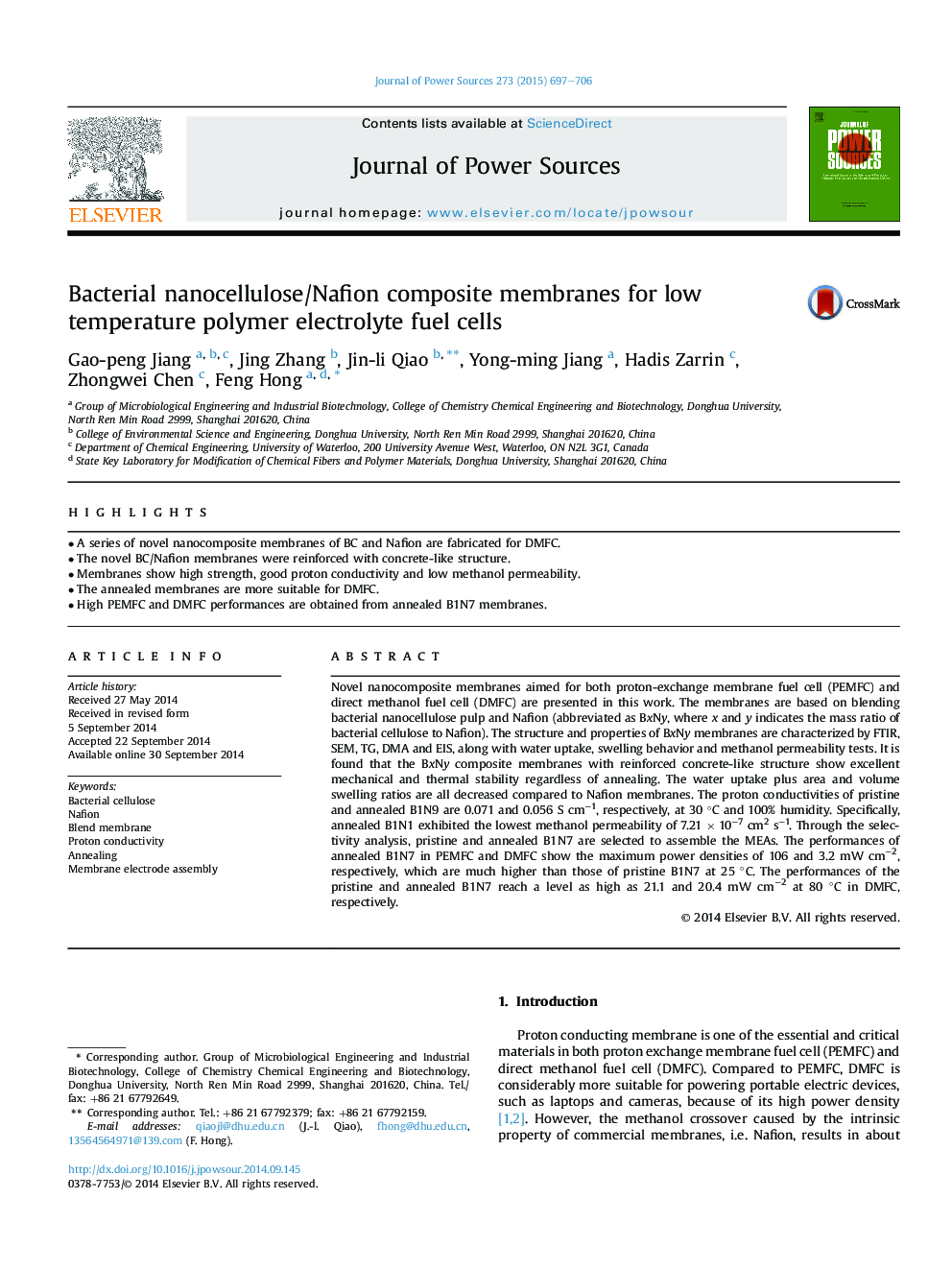| Article ID | Journal | Published Year | Pages | File Type |
|---|---|---|---|---|
| 7734549 | Journal of Power Sources | 2015 | 10 Pages |
Abstract
Novel nanocomposite membranes aimed for both proton-exchange membrane fuel cell (PEMFC) and direct methanol fuel cell (DMFC) are presented in this work. The membranes are based on blending bacterial nanocellulose pulp and Nafion (abbreviated as BxNy, where x and y indicates the mass ratio of bacterial cellulose to Nafion). The structure and properties of BxNy membranes are characterized by FTIR, SEM, TG, DMA and EIS, along with water uptake, swelling behavior and methanol permeability tests. It is found that the BxNy composite membranes with reinforced concrete-like structure show excellent mechanical and thermal stability regardless of annealing. The water uptake plus area and volume swelling ratios are all decreased compared to Nafion membranes. The proton conductivities of pristine and annealed B1N9 are 0.071 and 0.056 S cmâ1, respectively, at 30 °C and 100% humidity. Specifically, annealed B1N1 exhibited the lowest methanol permeability of 7.21 à 10â7 cm2 sâ1. Through the selectivity analysis, pristine and annealed B1N7 are selected to assemble the MEAs. The performances of annealed B1N7 in PEMFC and DMFC show the maximum power densities of 106 and 3.2 mW cmâ2, respectively, which are much higher than those of pristine B1N7 at 25 °C. The performances of the pristine and annealed B1N7 reach a level as high as 21.1 and 20.4 mW cmâ2 at 80 °C in DMFC, respectively.
Keywords
Related Topics
Physical Sciences and Engineering
Chemistry
Electrochemistry
Authors
Gao-peng Jiang, Jing Zhang, Jin-li Qiao, Yong-ming Jiang, Hadis Zarrin, Zhongwei Chen, Feng Hong,
